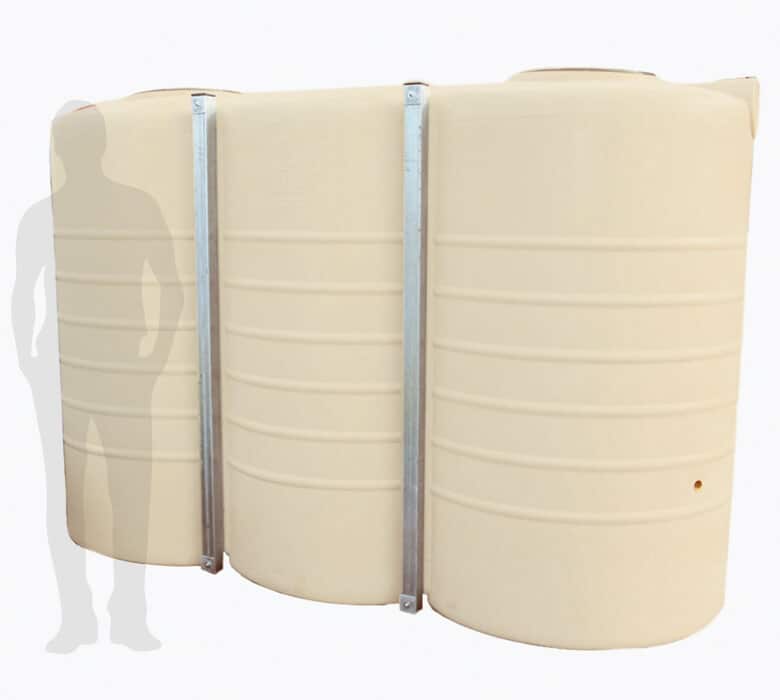Slimline Water Tanks: The Perfect Option for Urban Water Storage
Understanding the Value of Rainwater Tanks in Drought-Prone Regions for Water Protection
In regions at risk to extended droughts, the function of rainwater storage tanks in reinforcing water protection is a topic of expanding significance. As areas come to grips with the obstacles of water shortage, comprehending the significance of these storage tanks goes beyond simple collection of rain. Rainwater containers act as a crucial tool in alleviating the influence of water lacks by giving a sustainable resource of water for various requirements. Nonetheless, the true worth of rainwater storage tanks expands far beyond plain storage; it includes resilience-building actions and the promotion of long-lasting water conservation techniques. This multifaceted strategy to water safety and security warrants a more detailed evaluation of the duty rainwater storage tanks play in ensuring a reliable water system during times of drought.
Benefits of Rainwater Storage Tanks
Making use of rain storage tanks provides a sustainable solution for enhancing water supply and enhancing water security in residential and commercial setups. One of the key advantages of rainwater containers is their capability to reduce dependency on mains water supply.

Rainwater Harvesting Techniques
Rainwater harvesting techniques incorporate a variety of techniques developed to efficiently collect and store rain for numerous objectives, adding to water conservation and sustainability. One common technique is the installation of roof catchment systems, where rain is gathered from the roofing system of a building and directed to a storage space container. This technique is relatively simple and cost-effective. An additional preferred method is using above-ground or underground tank to store rain for later usage. These storage tanks come in numerous dimensions and materials to match various needs and can be attached to the existing pipes system for easy access.

In addition, rain yards and permeable sidewalks are cutting-edge techniques that entail landscaping or paving surfaces in such a way that allows rain to percolate right into the ground, replenishing groundwater books. Additionally, shape farming and terracing are agricultural methods that aid catch rain and protect against soil erosion in sloping terrain. By executing these varied rain harvesting strategies, communities can enhance water safety and security and durability in drought-prone areas while advertising sustainable water management methods.
Relevance of Water Security
Making sure reliable access to clean and adequate water sources is vital for maintaining human wellness, economic advancement, and environmental wellness. Water protection is a vital element of societal durability, especially in areas at risk to dry spells and water deficiency. Adequate water safety and security encompasses various dimensions, including accessibility, high quality, and availability of water for residential, farming, commercial, and ecological requirements.
Water safety plays a critical duty in advertising public wellness by lowering the frequency of waterborne conditions and making sure cleanliness facilities. Economically, water protection is crucial for agricultural performance, industrial procedures, and total financial growth. Slimline water tanks. you can check here Water protection is closely linked to environmental sustainability, as it sustains environments, biodiversity, and total ecological balance.
In drought-prone regions, water safety becomes a lot more important because of the enhanced risk of water lacks. Implementing methods like rain harvesting, water recycling, and effective water monitoring practices can dramatically enhance water safety in these locations. By prioritizing water safety, communities can better hold up against the impacts of climate adjustment, populace growth, and various other challenges that endanger water availability.
Enhancing Water Durability
With raising worldwide water challenges, building durability in water supply has actually become a vital emphasis for sustainable development efforts. Enhancing water durability entails implementing techniques to make sure water schedule and quality in the face of altering ecological problems, such as dry spells, floodings, and pollution.
One key element of improving water resilience is promoting using rain containers in drought-prone areas - Slimline water tanks. Rainwater storage tanks function as a reliable methods this contact form of capturing and storing rainwater for later use, lowering reliance on scarce freshwater sources during completely dry durations. By including rain harvesting systems into water administration strategies, communities can enhance their capability to hold up against water scarcity and maintain water safety

Lasting Water Conservation
In the middle of escalating water difficulties, the prudent management of water sources through sustainable conservation techniques is critical for making sure lasting environmental stability and social well-being. Sustainable water conservation involves the reliable usage of water sources to meet current requirements without endangering the ability of future generations to meet their own demands. By carrying out methods such as rain harvesting, greywater recycling, and water-efficient technologies, communities can decrease water wastage and minimize stress on freshwater sources.
Furthermore, sustainable water conservation methods add to ecosystem wellness by maintaining adequate water levels in rivers, lakes, and marshes, sustaining biodiversity, and maintaining all-natural habitats. These practices also play a vital duty in minimizing the impacts of climate change by imp source aiding to adjust to transforming rainfall patterns and water schedule.

Verdict
Finally, rain storage tanks play an essential duty in boosting water safety and resilience in drought-prone regions. By making use of rain harvesting strategies, areas can reduce their reliance on conventional water resources and promote sustainable water conservation techniques. This not only helps alleviate the impacts of water scarcity throughout dry spells yet likewise adds to long-term water protection and durability when faced with environment modification obstacles.